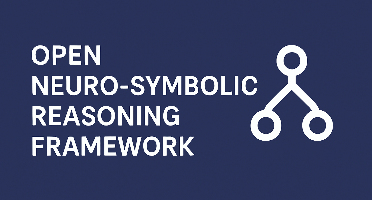
Pragadeesh
Project OwnerSolo developer handling end-to-end execution: architecture, coding, training, testing, logic integration, and documentation using fully open-source tools.

A modular, open-source framework that fuses symbolic logic rule embeddings with deep learning models using PyNeuraLogic and Kolmogorov–Arnold Networks (KANs). This project aims to deliver a reproducible neuro-symbolic engine that supports explainability, higher-order reasoning, and small-data learning using Python. The solution will demonstrate logic-aware neural networks trained on real-world reasoning datasets.
This RFP invites proposals to explore and demonstrate the use of neural-symbolic deep neural networks (DNNs), such as PyNeuraLogic and Kolmogorov Arnold Networks (KANs), for experiential learning and/or higher-order reasoning. The goal is to investigate how these architectures can embed logic rules derived from experiential systems like AIRIS or user-supplied higher-order logic, and apply them to improve reasoning in graph neural networks (GNNs), LLMs, or other DNNs. Bids are expected to range from $40,000 - $100,000.

In order to protect this proposal from being copied, all details are hidden until the end of the submission period. Please come back later to see all details.
Week 1 – Week 2 This milestone covers the selection, setup, and integration planning for all required open-source frameworks including PyNeuraLogic, KANs, and PyTorch. It includes environment configuration, dataset acquisition (CLUTRR, FB15k), and defining the symbolic reasoning architecture blueprint.
- Finalized technical blueprint for the symbolic-DNN engine - Environment setup script for full reproducibility - Documentation of all chosen tools, licenses, and configurations - Public checklist with dataset sources and integration strategy
$12,000 USD
Completion of an architecture overview PDF and toolchain setup guide Full open-source compatibility verified Ready-to-run environment config (requirements.txt, YAML, Docker, etc.)
Week 3 – Week 5 This milestone focuses on building the core logic embedding engine using PyNeuraLogic and PyTorch. It involves the development of a module that allows logic rules to be structured and inserted into deep neural architectures, particularly graph-based models. The milestone also covers the internal parsing of symbolic rules, compatibility with DNN layers, and validation through unit tests.
- Symbolic rule definition format (JSON/prolog-style) - Logic embedding pipeline code (PyTorch + PyNeuraLogic) - GNN integration structure with symbolic overlays - Basic test suite to validate rule inference flow
$15,000 USD
- Logic rules successfully embedded and propagated within GNN/DNN layers - Internal logic trace passes expected outputs - Modular design allowing plug-in of new rule sets - Minimum 80% unit test coverage achieved for logic parser module
Week 6 – Week 7 This milestone focuses on the integration of Kolmogorov–Arnold Networks (KANs) into the neuro-symbolic pipeline. KANs will be used to model complex and dynamic relationships in structured data, offering interpretable transformations and improved reasoning accuracy. The goal is to complement symbolic logic with functional approximation, simulating how logic emerges in continuous spaces.
- Functional KAN module (based on existing open-source) - Integration script connecting symbolic input to KAN layers - Tests with symbolic datasets (e.g., function mappings) - Comparative report vs standard neural networks
$14,000 USD
- Symbolic rule propagation through KANs validated - Output accuracy comparable or superior to baseline DNN - At least one dynamic reasoning task modeled via KANs - Logs showing interpretable intermediate layer behavior
Week 8 – Week 9 This milestone involves training the neuro-symbolic model on publicly available symbolic reasoning datasets such as CLUTRR (for relational logic) and FB15k (for knowledge graph completion). The focus will be on demonstrating the model’s ability to generalize logic-based patterns using minimal data, a hallmark capability of neuro-symbolic systems.
- Dataset preparation scripts for CLUTRR and FB15k - Trained model checkpoints (PyTorch format) - Accuracy/precision benchmark charts - Evaluation metrics comparing performance on full vs small dataset slices
$15,000 USD
- Model achieves > baseline accuracy on logic reasoning tasks - Verified logic rule generalization from few-shot training - Transparent training logs published with model artifacts - Model handles at least two distinct symbolic datasets effectively
Week 10 – Week 11 This milestone centers on building the model’s explainability layer and evaluating how effectively symbolic reasoning can be visualized and interpreted. It includes tools to trace logic paths, compare symbolic predictions with actual outputs, and explain model decisions through rule-based visualizations.
- Explainability module integrated into the inference pipeline - Visual logic trace reports (PDF + images) - Comparison of predictions with symbolic ground-truth reasoning - Annotated screenshots and charts for documentation
$14,000 USD
- Symbolic decisions can be visualized clearly - Traceable path from input → rule → prediction - Reports highlight improved interpretability over traditional models - All visuals included in final documentation
Week 12 – Week 13 This milestone ensures that all components of the project are clearly documented, licensed, and prepared for public release. The codebase will be structured, commented, and uploaded to a public GitHub repository under the MIT license. User guides, installation instructions, and reproducibility scripts will be provided.
- Developer & user documentation (PDF + Markdown) - MIT license file - Public GitHub repository with full codebase - Setup guide (requirements.txt / Dockerfile / CLI usage)
$12,000 USD
- Code passes reproducibility check on clean environment - GitHub repo is live and complete - All scripts and models tagged with clear instructions - Documentation reviewed for clarity and accuracy
Week 14 – Week 16 This milestone delivers the final proof of concept and submission package. It includes a recorded screencast demonstrating symbolic reasoning in action, a final report summarizing all milestones, and submission of all deliverables through the DeepFunding platform. If reviewer feedback is provided, revisions will be addressed before final closure.
- Screencast showing model performing symbolic inference - Final project report (PDF + link to GitHub) - Summary slides and performance visuals - Submission archive (ZIP)
$18,000 USD
- All deliverables validated and submitted on time - Project accepted for completion with full documentation - Final video demonstrates symbolic reasoning clearly - Reviewer comments (if any) addressed in response log
Reviews & Ratings
Please create account or login to write a review and rate.
Check back later by refreshing the page.
© 2025 Deep Funding

Join the Discussion (0)
Please create account or login to post comments.